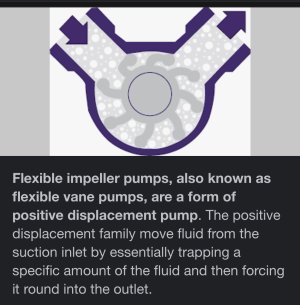Redneck_Sophistication
Super User
I think all my rednecking “good enough” projects has angered the gods!
Saddle of the lathe back together. Used it for a minute and it was making an odd noise. Checked to make sure the oil pump was working, noticed the shop made coupler between the stock shaft and the shop fitted replacement pump slipped off.
Got it back on and was indexing the shaft to tighten up the set screw and found this

When who ever made/installed this it was slightly out of alinement maybe that stressed the shaft into breaking.
Id figured on supplementing the mechanical pump with an electrical one. I guess that’s a replacement instead now.
Anyone know of a small inline oil pump that can lift 18-24”
Id planned to hook it to the drain plug pump it externally into a manifold of some kind to distribute the oil better.
Most things I see are 12v transfer pumps, line voltage pumps seem to be huge. Many a 12v power supply and pump.
I’ll have a brand new lathe by the end of this lol
Saddle of the lathe back together. Used it for a minute and it was making an odd noise. Checked to make sure the oil pump was working, noticed the shop made coupler between the stock shaft and the shop fitted replacement pump slipped off.
Got it back on and was indexing the shaft to tighten up the set screw and found this
When who ever made/installed this it was slightly out of alinement maybe that stressed the shaft into breaking.
Id figured on supplementing the mechanical pump with an electrical one. I guess that’s a replacement instead now.
Anyone know of a small inline oil pump that can lift 18-24”
Id planned to hook it to the drain plug pump it externally into a manifold of some kind to distribute the oil better.
Most things I see are 12v transfer pumps, line voltage pumps seem to be huge. Many a 12v power supply and pump.
I’ll have a brand new lathe by the end of this lol


